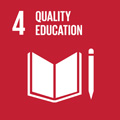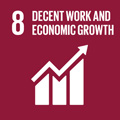- Docente: Beatrice Bertarini
- Credits: 6
- SSD: IUS/05
- Language: English
- Teaching Mode: Traditional lectures
- Campus: Bologna
-
Corso:
Second cycle degree programme (LM) in
Law, Economics and Governance (cod. 5811)
Also valid for Second cycle degree programme (LM) in Law and Economics (cod. 5913)
-
from Feb 13, 2025 to Mar 19, 2025
Learning outcomes
At the end of the module, students: - know the European legal framework undergirding small and medium-sized firms’ operations and management; - are able to autonomously set up legal research to orient small and medium-sized organizations towards the identification of effective courses of action.
Course contents
Introduction: European Union and legal acts, the industrial policy of the European Union and the role of micro – small – medium enterprises (SMEs).
SMEs in international context.
Large enterprises and SMEs, what differences? How public institutions support smart, inclusive and sustainable growth of SMEs in Europe; an high-quality Union legislation for SMEs.
The need of SMEs to: burden reduction/simplification; promotion of entrepreneurship; improving access to markets and internationalization; facilitating access to finance; supporting competitiveness and innovation; provision of key support networks. The role of European Commission Communications.
Last lectures will be dedicated to the student presentations.
Readings/Bibliography
Recent report:
- OECD Studies on SMEs and Entrepreneurship and OECD Small and medium enterprise outlook
- EU Annual Report on European SMEs
- EU: Small and Medium Sized Enterprises in European Regions and Cities
Historical overview:
- D.J Storey, B.S Tether, Public policy measures to support new technology-based firms in the European Union, Research Policy, 1998
- David Floyd, John McManus, (2005) "The role of SMEs in improving the competitive position
of the European Union", European Business Review, Vol. 17 Issue: 2, pp.144-150
Future prospective:
- Rizos, Vasileios and Behrens, Arno and Kafyeke, Terri and Hirschnitz-Garbers, Martin and Ioannou, Anastasia, The Circular Economy: Barriers and Opportunities for SMEs (September 17, 2015). CEPS Working Documents . Available at SSRN: https://ssrn.com/abstract=2664489
- J. M. Muller – O. Bulga – K. I. Voigt, Fortune favors the prepared: How SMEs approach business model innovations in Industry 4.0, in Technological Forecasting & Social Change, 2018
Further material can be suggest during lessons.
Final List of readings will be distribute at the end of the course.
Teaching methods
The course will be taught using a wide variety of formats, including lectures, seminars, classroom discussions, and students presentations.
Assessment methods
60% written paper – presentation
40% written exam
Evaluation criteria:
18-23: the student has sufficient preparation and analytical skills, spread however, over just few topics taught in the course, the overall jargon is correct
24-27: the student shows and adequate preparation at a technical level with some doubts over the topics. Good, yet not to articulate analytical skills with the use of a correct jargon
28-30: Great knowledge about most of the topics taught in the course, good critical and analytical skills, good usage of the specific jargon
30L: excellent and in depth knowledge of all the topics in the course, excellent critical and analytical skills, excellent usage of specific jargon.
Teaching tools
power point presentations
Office hours
See the website of Beatrice Bertarini
SDGs


This teaching activity contributes to the achievement of the Sustainable Development Goals of the UN 2030 Agenda.
